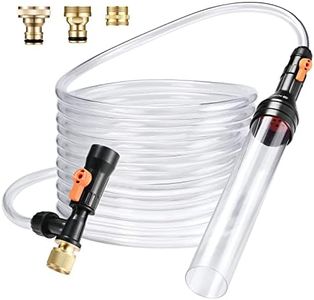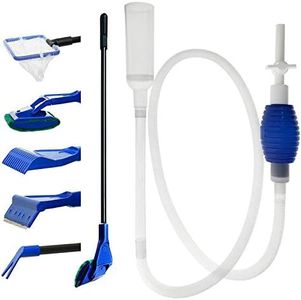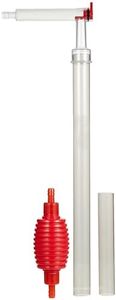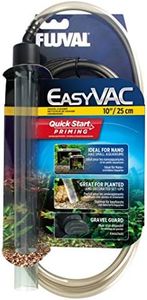We Use CookiesWe use cookies to enhance the security, performance,
functionality and for analytical and promotional activities. By continuing to browse this site you
are agreeing to our privacy policy
10 Best Aquarium Gravel Cleaners
From leading brands and best sellers available on the web.Buying Guide for the Best Aquarium Gravel Cleaners
Choosing the right aquarium gravel cleaner is important for maintaining a healthy and visually appealing aquatic environment. The goal is to make cleaning your aquarium substrate as easy, efficient, and safe as possible for both you and your fish. When picking a gravel cleaner, start by considering the size and type of your aquarium, the kind of fish or aquatic life you have, and how often you'd like to perform maintenance. Matching the features of the gravel cleaner to your needs will help you keep your tank clean with minimal hassle.Type (Manual vs. Electric)Aquarium gravel cleaners come in two main types: manual and electric. Manual cleaners work through simple suction—often with a siphon or hand pump—while electric models usually have a battery or plug for automated flow. The type you pick affects convenience and cleaning speed. Manual types are generally lighter, inexpensive, and rely on your control, making them ideal for smaller tanks or owners who prefer a hands-on approach. Electric cleaners offer quick and thorough cleaning, suitable for bigger tanks or those who want to save time and effort. Consider your tank size and how often you want to clean when deciding between these types.
Tube or Hose LengthThe length of the tube or hose determines how easily you can reach the gravel and maneuver around the tank without disturbing your setup. Short hoses are more suited for small aquariums, while long hoses are best for deep or large tanks. To choose the right length, measure the height and width of your tank, and make sure the cleaner’s tube can reach all corners comfortably. If your aquarium is tall or positioned in a hard-to-reach spot, a longer hose will make cleaning easier.
Gravel Head SizeThe gravel head is the part that contacts the substrate, and its size affects how much area you can clean at once. A small head allows for precise cleaning around plants and décor, but it takes more time to clean a whole tank. Large heads cover more area quickly but might not fit into tight spaces. Think about your tank’s layout and whether you need to clean around lots of decorations. For minimalist setups, a larger head can save time, but for heavily planted or decorated tanks, a smaller head helps keep everything safe.
Flow Control/Adjustable ValveFlow control or adjustable valves let you regulate how fast water and debris are removed from the tank. Having control over the flow is important because strong suction can disturb the gravel and stress your fish, while too slow a flow may not lift dirt effectively. Adjustable flow cleaners are best if you have delicate fish, small tanks, or need to finely tune your cleaning. For basic cleaning on sturdy setups, fixed-flow models are often sufficient.
Debris Collection MethodSome gravel cleaners simply siphon water and debris out of the tank, while others have built-in filters or collection bags to trap waste and return clean water to the aquarium. Debris collection is important for keeping water changes efficient and preventing messes. If you want to minimize water loss during cleaning, look for models with effective debris traps. Otherwise, traditional siphons are fine if you do water changes during cleaning.
Ease of Use and AssemblyA gravel cleaner should be simple to assemble, operate, and clean after use. Easy-to-use cleaners save time and make you more likely to keep up with maintenance. Some have priming bulbs for quick starts, clear tubes for viewing debris, or quick-release features. If you’re new to aquarium care or want hassle-free maintenance, focus on designs with clear instructions and minimal setup.


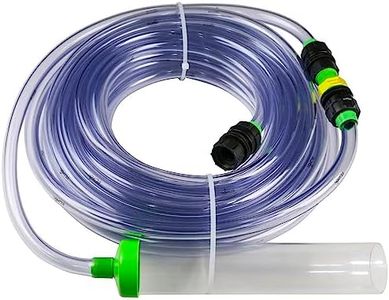
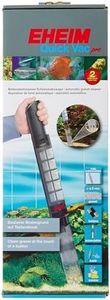
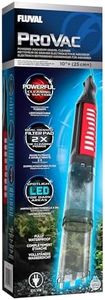

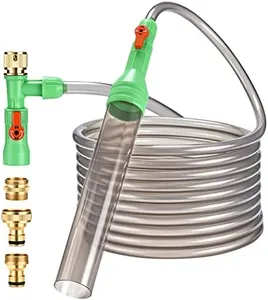
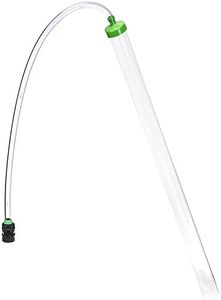
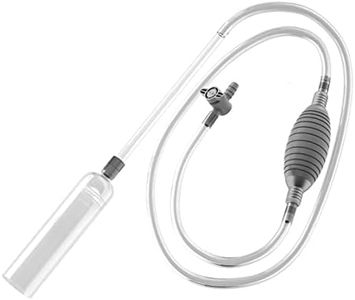
![QZQ Aquarium Gravel Cleaner [2023 Edition] Vacuum Fish Tank Vacuum Cleaner Tools for Aquarium Water Changer with Aquarium Thermometers Fish Net kit Use for Fish Tank Cleaning Gravel and Sand](https://images-proxy.bestreviews.guide/iDz7gelLco-KRG4mbJmSJzBQfnM=/0x300/https://m.media-amazon.com/images/I/51S+2N20RtL._AC_CX679_.jpg)
